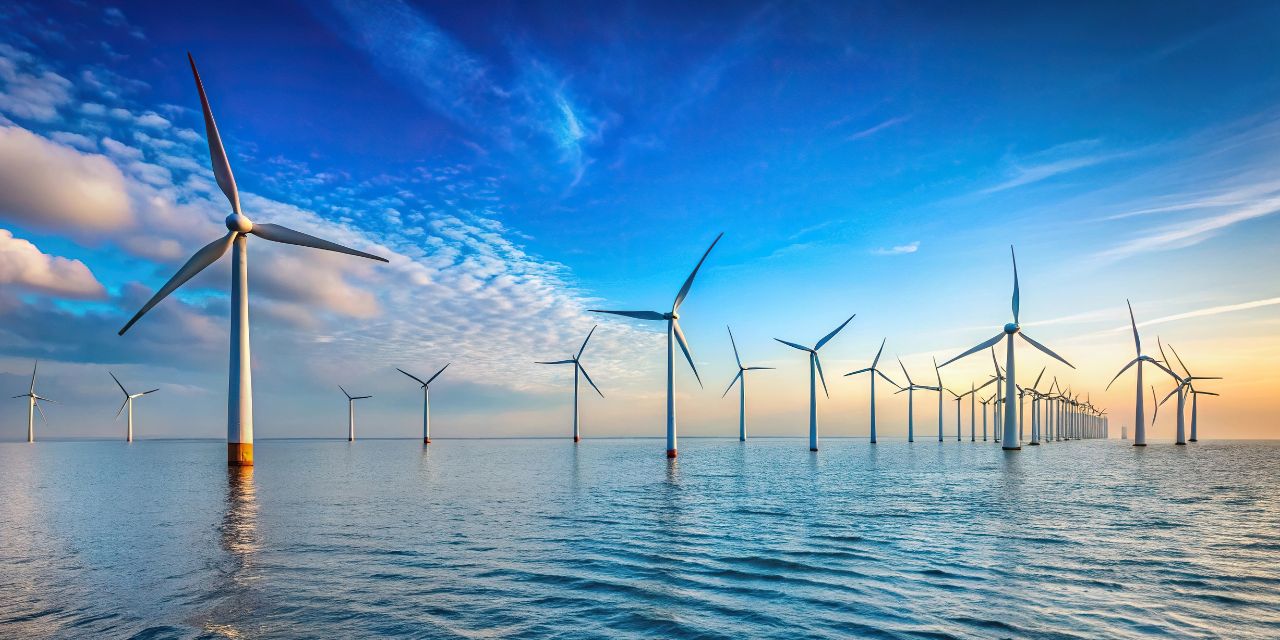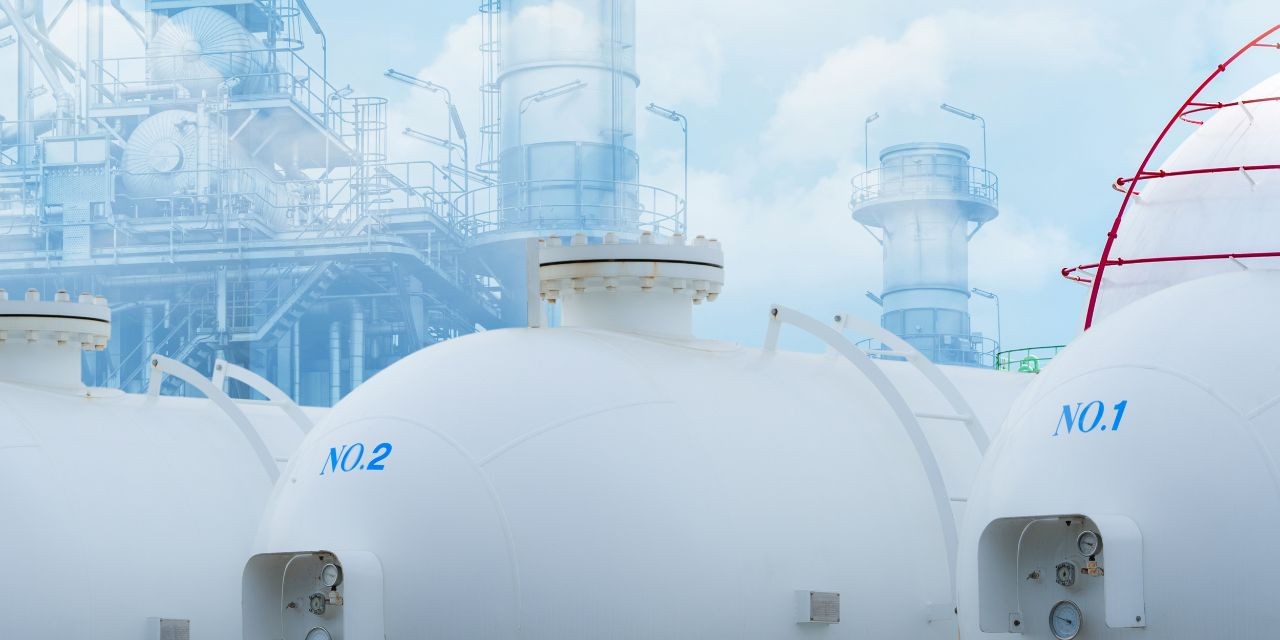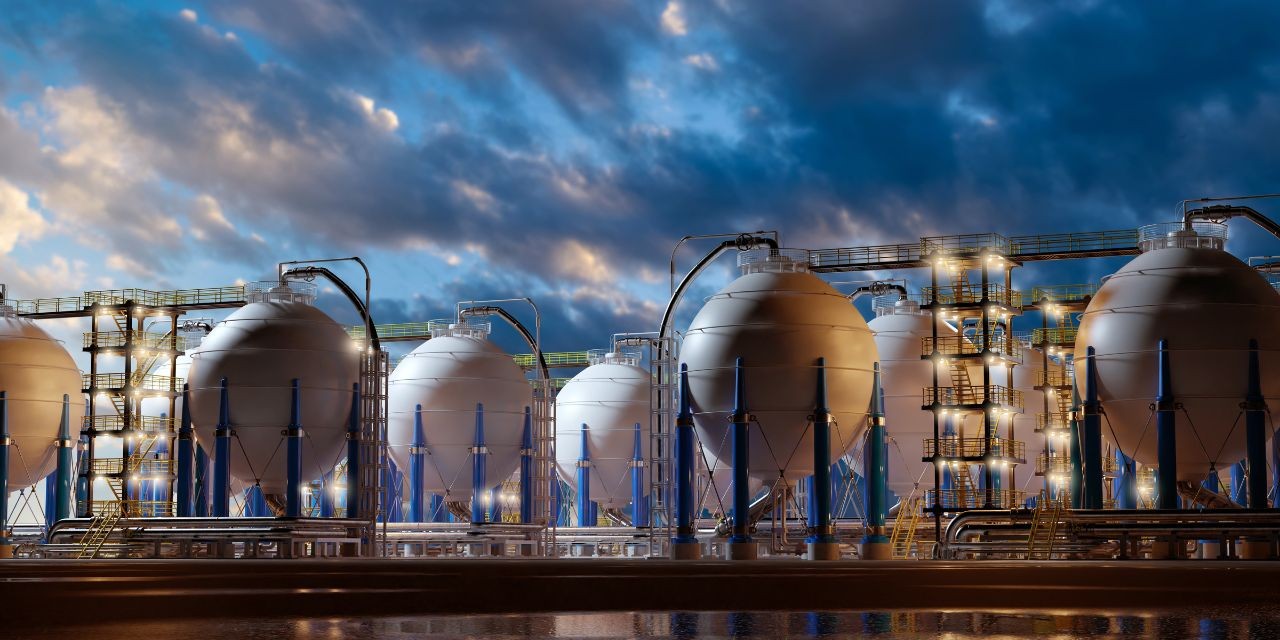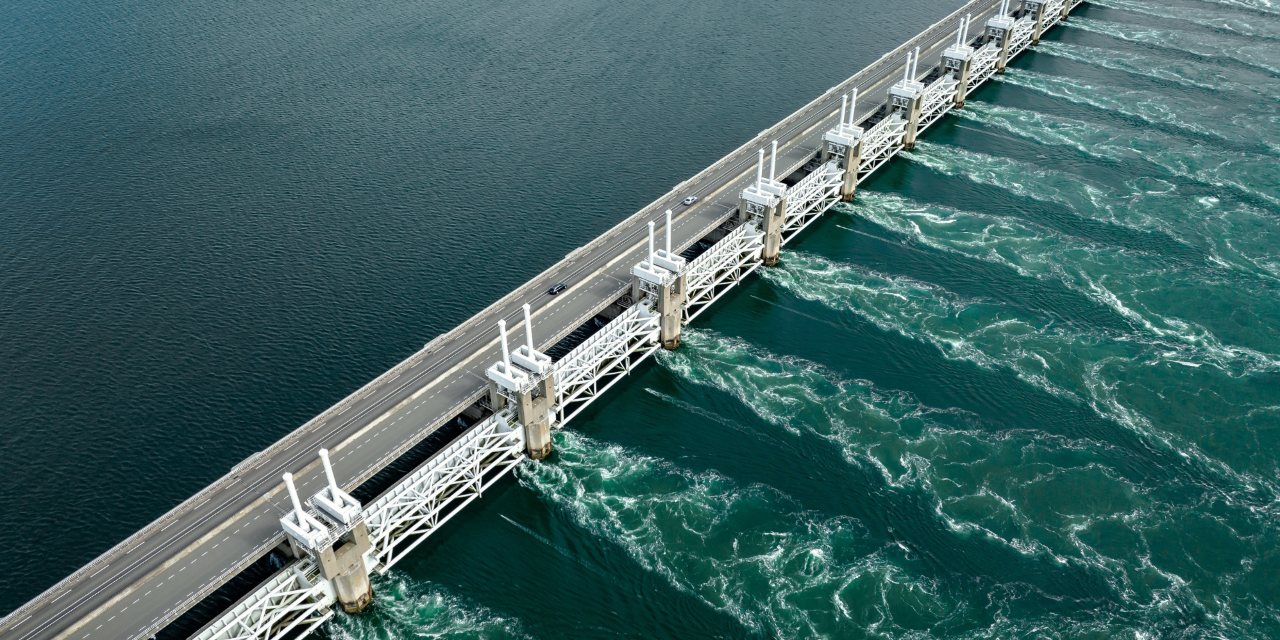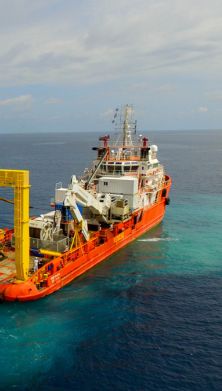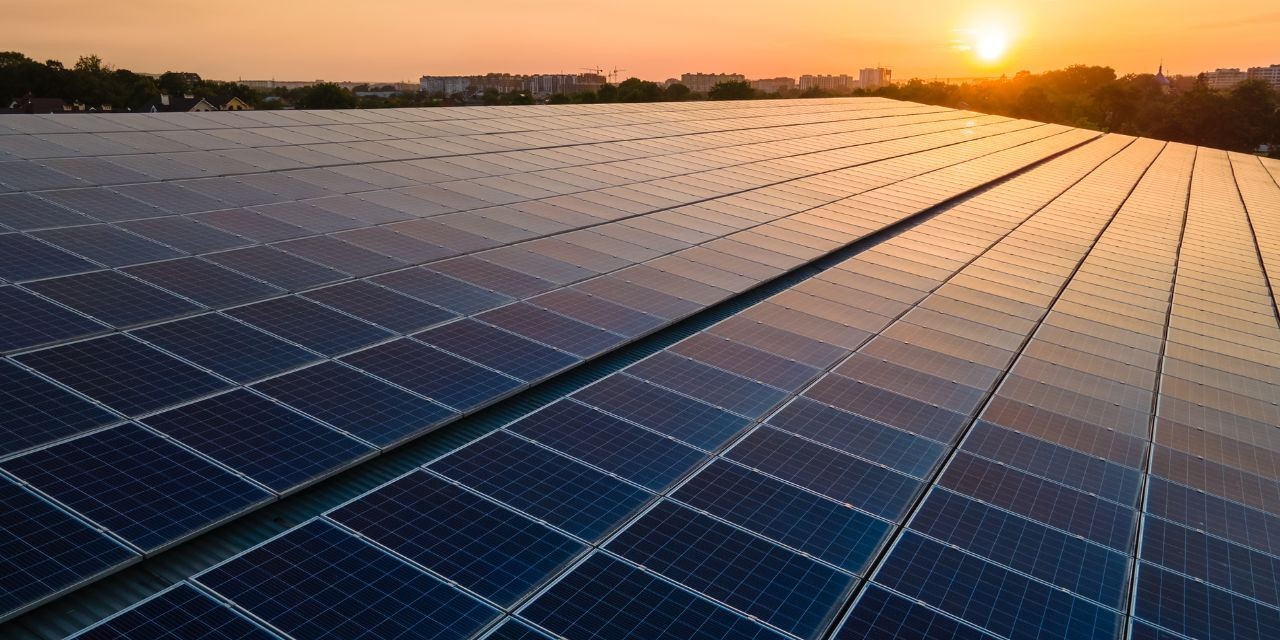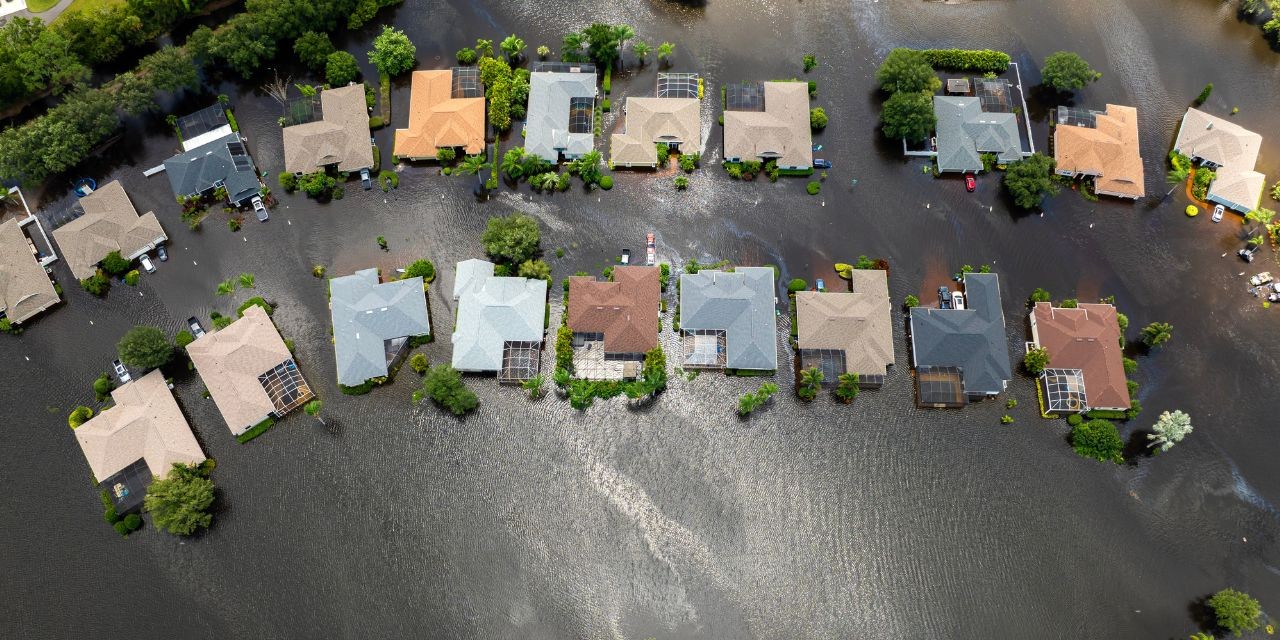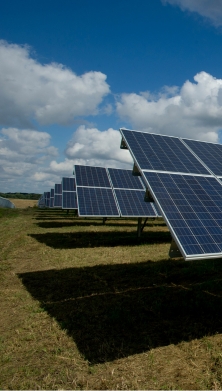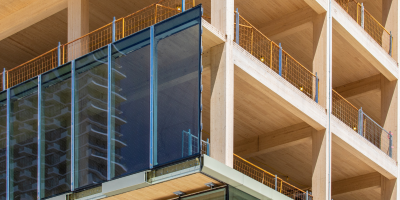Winds of change hit offshore energy generation
Europe’s announcement that 50% of its electricity in 2024 came from renewables like wind and solar was as celebratory as a bureaucratic report can get – factual with a formal tone just shy of champagne popping. It was a significant moment on the continent’s path to achieve climate neutrality by 2050 and its push to reduce reliance on imported fossil fuels.
Wind energy contributed 20% to Europe’s total electricity generation in 2024 [1]. To meet its climate goals, the EU plans to up wind’s share to 34% by 2030 and over 50% by 2050, requiring a massive expansion in wind generation, particularly offshore [2].
The EU had 19.38 gigawatts (GW) of maximum offshore capacity in 2023 [3], enough to power one million homes daily when running at an average of 45% capacity. Plans are to boost this to 111GW by 2030 and triple it again to 317GW by 2050 [4], but there is a hitch. Suitable shallow-water sites for turbines are becoming scarce, especially in the North and Baltic Seas, where many prime locations are already developed or allocated.
Further constraints come from shipping lanes, fishing zones, military areas, and marine conservation sites, while public opposition and permitting delays add to the hurdles. To overcome these limits, the EU is helping fund floating offshore wind (FOW) technologies, which can be deployed in deeper waters, unlocking vast wind resources in the Atlantic, Mediterranean, and deeper parts of northern seas.
“Traditional fixed-bottom wind farms become commercially unviable beyond water depths of 40 to 50 meters as fixed turbines are either impossible to install or are not economically feasible,” explains Adam Reed, Global Leader – Offshore Renewables and Upstream Energy at Allianz Commercial. “Floating technology opens up vast new areas for offshore wind development.”
Early days, big potential
FOW is a new market where floating offshore wind turbines are moored to the seabed, enabling power generation in deeper waters where wind speeds are stronger and more consistent. Their mass deployment could mark a significant leap forward for offshore wind, expanding the potential sites for wind harvesting beyond established North Sea hubs.
“Right now, floating wind is in its early days – only a handful of projects are operational, and none at full commercial scale,” says Wei Zhang, Senior Risk Consultant, Natural Resources, Allianz Commercial. “But their deployment opens huge potential.”
Zhang says Europe is leading the charge in FOW technologies, with France, Norway, Portugal, and the UK at the forefront. Japan and South Korea are making advances in Asia. Australia, China and Taiwan are also among those exploring floating wind technology. Two years ago, a TGS | 4C Offshore report forecast that 12.4 GW of potential floating wind capacity could be operational or under construction globally by 2030, rising to 39GW by 2035 [5].
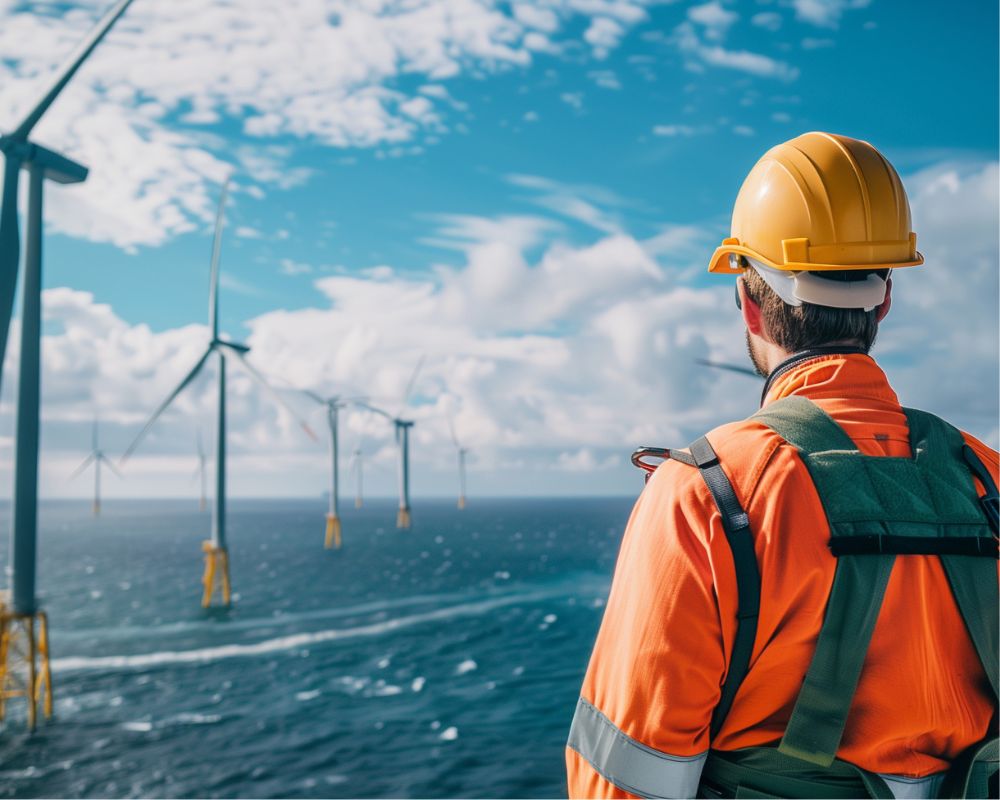
Mega projects coming soon
As of February 2025, the largest operational FOW farm is Hywind Tampen, located 140km (87 miles) off Norway. Developed by Equinor, a Norwegian company, Hywind Tampen comprises 11 turbines with a total capacity of 88 megawatts (MW). It began supplying electricity to Equinor’s Snorre and Gullfaks oil and gas platforms in the Norwegian North Sea in November 2022 and was officially opened in August 2023.
Looking ahead, the Green Volt project, co-owned by Flotation Energy and Vårgrønn, will become the world’s largest floating offshore wind farm upon its expected commissioning in 2029. Located about 80km (50 miles) off the east coast of Scotland, Green Volt will feature 35 turbines, with a total 560MW capacity. Equinor’s Firefly/Bandibuli floating wind farm, planned for South Korea, could provide 750MW and be a major step for the company into Asian markets if realized.
Cost and complexity – the biggest hurdles
However, challenges remain before the potential of FOW can be realized. Unlike traditional fixed-bottom platforms, which are constructed offshore, FOW platforms are primarily assembled in dry docks before being towed to their installation sites and secured with mooring lines. While enabling deployment in deeper waters, this process adds complexity, logistical challenges and costs, making large-scale commercialization difficult.
Anastasios Leonburg, Senior Marine Risk Consultant with Allianz Commercial, states that floating wind is currently twice as expensive as fixed-bottom offshore wind. The cost per megawatt can cost €2mn compared to around €1mn for fixed-bottom installations:
“One significant challenge is the lack of standardization. There are more than 30 different floating foundation designs competing for dominance. Right now, every project is essentially a prototype. Until we see industrial-scale manufacturing, costs will remain high.”
In recent years, design, construction and deployment advancements have steadily driven costs down. If standardization is achieved and FOW scales up, then it benefits from economies of scale and improved supply chains, so costs should decline, making it a more competitive renewable energy solution.
Risk management and assurance firm DNV has estimated that FOW could account for 15% of global offshore wind capacity by 2050. About 270 GW could be installed globally over 30 years, requiring around 18,000 turbines, each mounted on top of floating structures weighing more than 5,000 tons. The sheer scale of deployment is staggering – if all the mooring lines needed to anchor these turbines were laid end to end, they would circle the Earth more than once [6].
Engineering, insurance, and managing the risks
While Leonburg and Zhang are optimistic about FOW, as with all with technological innovations, potential benefits are accompanied by risk management challenges. Data is lacking in how FOW structures and their cables will perform in extreme offshore environments, for example.
“Until large-scale FOW farms operate for several years, the risks and failure rates remain uncertain,” comments Leonburg. “Offshore conditions are more extreme than those experienced by turbines in shallower waters. They will also be exposed to hurricanes, typhoons and extreme wave heights, which could lead to structural failures.”
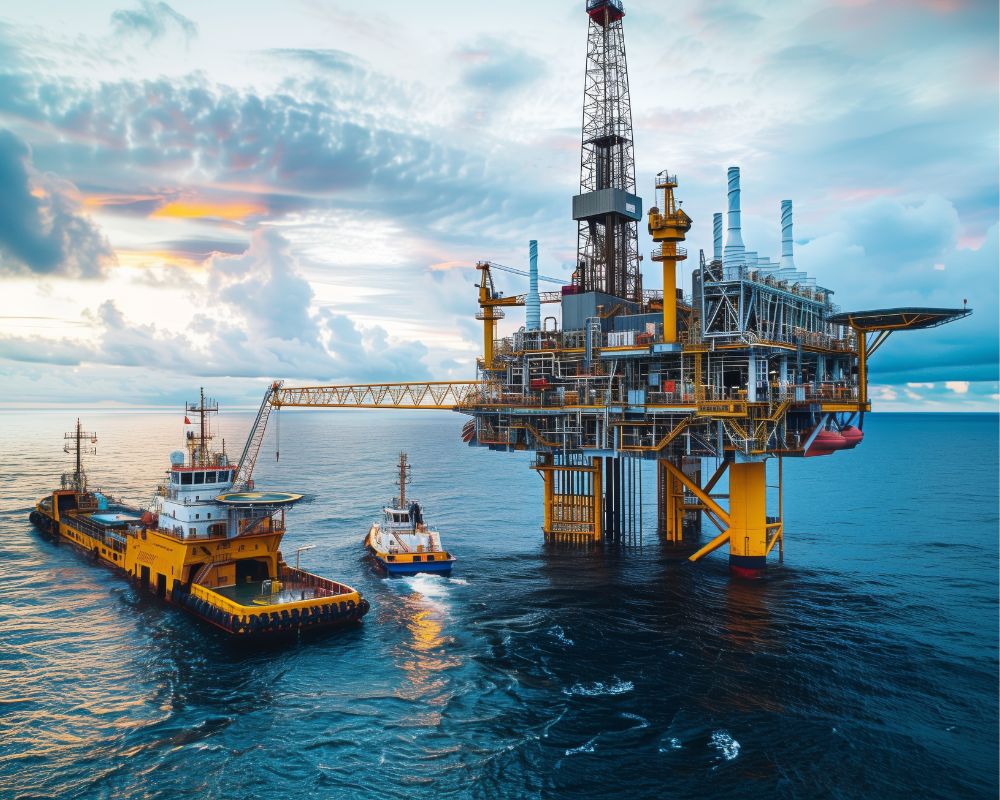
Zhang notes that a weak link is the dynamic cables. “Traditional offshore wind cables don’t have to move, but in floating projects, they are constantly under stress due to wind forces, wave motion and turbine movement.”
Fixed-bottom wind farms use static subsea cables for power transmission, and these are secured to the seabed. Despite this, cable damage is already a major issue in fixed-bottom wind, and it will be even more critical in floating, where the dynamic cables need to flex and absorb constant bending, twisting and mechanical stress, making them more susceptible to wear, fatigue, and potential failure.
Zhang says some projects are exploring shared anchoring systems, whereby multiple turbines are connected to the same anchor point. While this approach can reduce material costs and seabed disturbance, it also introduces significant vulnerability. If a single anchor or mooring line fails, it could cascade, potentially destabilizing multiple turbines.
The cost of repairing a single fixed-bottom offshore wind cable failure is estimated at €5mn to €10mn per incident. In FOW, the costs could escalate significantly, especially if multiple turbines are affected.
Floating’s advantages and changing political winds
FOW may offer advantages over fixed ocean turbines. Building wind turbines on land before deployment at sea is safer and minimizes the need for specialized heavy-lifting equipment and expensive offshore installation vessels. This approach could lead to new, more cost-effective operating models.
As floating wind turbines are inherently mobile, they could be dismantled and towed back to port for maintenance, reducing the logistical challenges of offshore repairs. Companies are also exploring in-situ repair, better turbine designs for floating applications, and more accessible maintenance strategies that could reduce overall costs.
Another advantage is that FOW projects potentially face less opposition from coastal communities. Since floating wind farms are installed further offshore, they are less visible from land and generate lower noise levels, addressing concerns often raised about nearshore wind projects.
However, the fishing industry is concerned about FOW structures intruding into marine ecosystems. The impact on fishing routes, fish populations and seabed habitats remain a point of contention, highlighting the need for careful planning to balance energy production with existing ocean industries.
Another threat to the development of offshore in general are changing political winds. While offshore wind remains a key component of Europe’s renewable energy strategy, in the US, policy uncertainty and cost pressures have led to concerns about the long-term growth of offshore wind. Recent moves to pause federal offshore wind leasing, along with debates over subsidies and permitting, have introduced additional risks for investors and developers. These challenges underscore the importance of stable regulatory frameworks and long-term planning to ensure the viability of offshore wind projects, particularly as emerging technologies like floating wind farms seek to scale up and attract investment.
“At the same time, globally, the floating wind sector is likely to continue, as well as the cooperation between European and US companies,” says Zhang. For example, the WindFloat technology, developed by the US-based company Principle Power, is one of the pioneering innovations in this sector, and its application in Europe highlights the transatlantic collaboration and leadership in advancing this technology, Zhang explains.
Path to commercial success
“Floating offshore wind is essential for meeting future energy demands by unlocking vast new wind resources in deeper waters where fixed-bottom turbines cannot operate. As technology advances and costs decline, FOW will play a pivotal role in expanding renewable energy capacity, strengthening energy security, and driving the transition towards a more sustainable, low-carbon future,” says Reed.
As an underwriter, Reed decides whether a project will be taken on as an insurance risk and explains that Allianz Commercial is playing a critical role in bridging the gap between early-stage projects and large-scale commercial deployment.
“We lead two of the four operational floating wind farms globally, which gives us deep expertise in managing the risks of this emerging technology,” Reed says. “Our role is to evaluate project feasibility, technology reliability, and maintenance strategies to ensure that risks are managed and costs come down as the industry scales up. We look forward to continuing to use our significant expertise to help support the growth of this exciting sector.”
References
[1] Wind Europe, Europe gets 20% of its electricity from wind. But not enough new wind farms being built. Urgent action needed on permitting, grids and electrification, January 10, 2025
[2] Wind Europe, Europe gets 20% of its electricity from wind. But not enough new wind farms being built. Urgent action needed on permitting, grids and electrification, January 10, 2025
[3] European Commission, Offshore renewable energy
[4] European Commission, Communication from the Commission to the European Parliament, the Council, the European Economic and Social Committee and the Committee of the Regions, October 24, 2023
[5] TGS | 4C Offshore, Floating wind holds promise, but delivery is challenging, June 26, 2023
[6] DNV, Floating Wind: Turning Ambition into Action, February 2023
